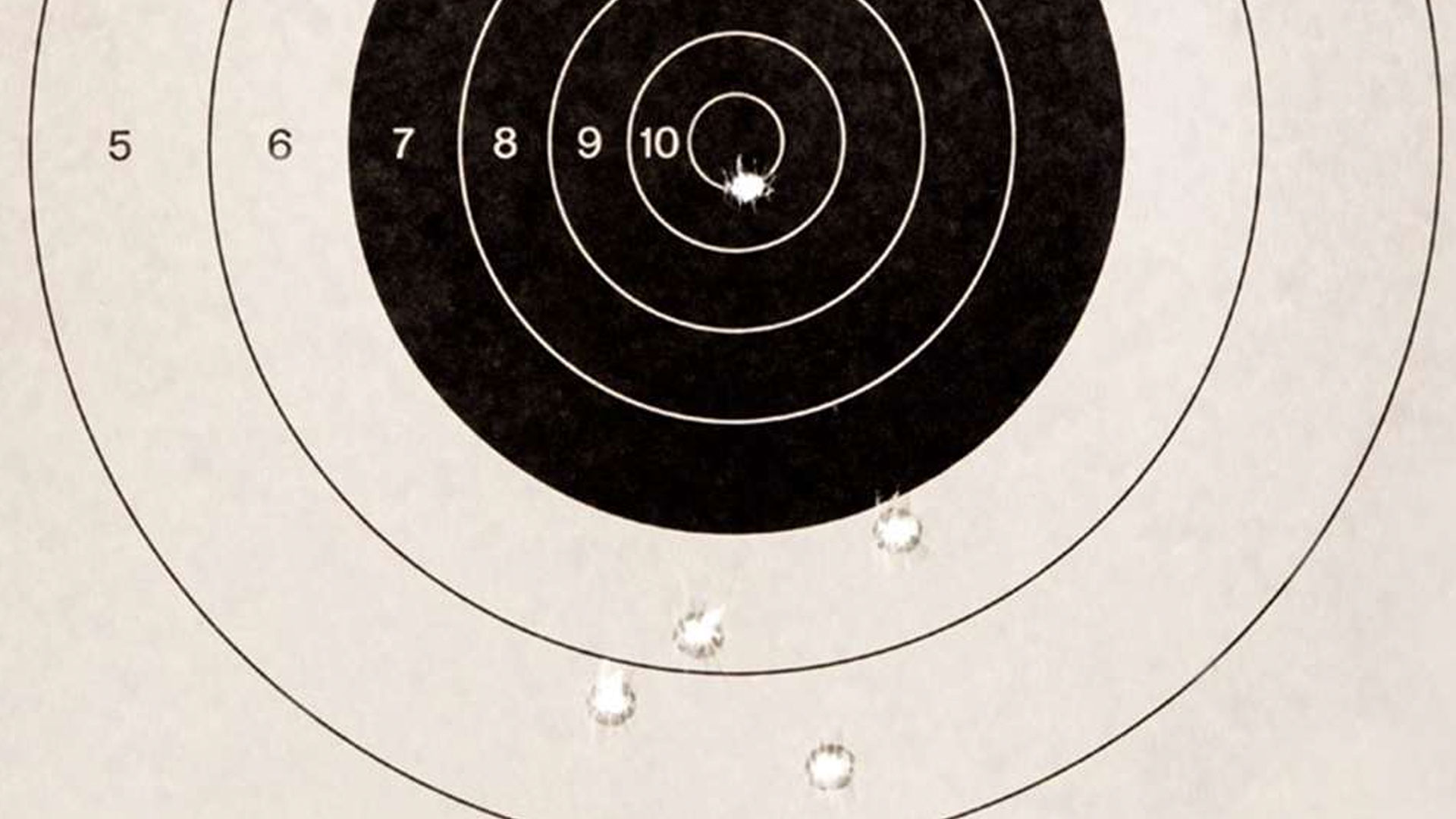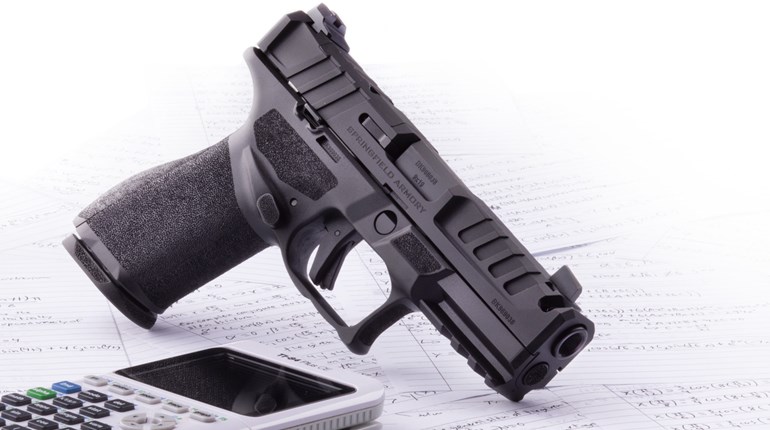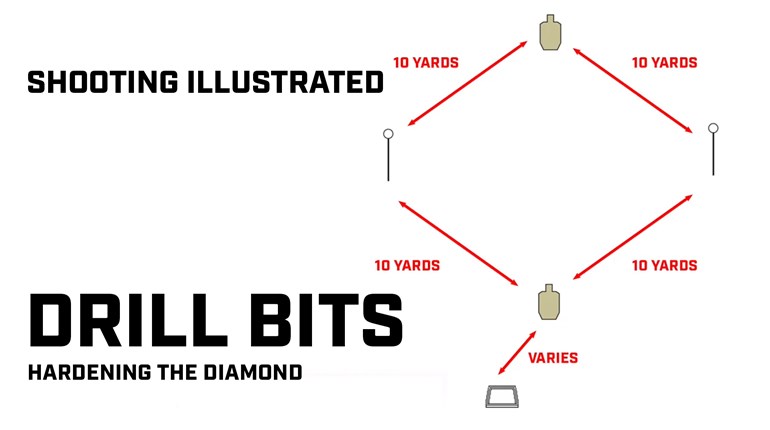
Experienced shooters know that efficiency equates to speed. Recoil recovery on the same target is measured as a “split” time and in between targets as “transition” time. For shooting-drill purposes, we’ll refer to each measurement as a “break” time. Break-time efficiency (speed) is a matter of resetting prior to recovery (timing).
Our drill this month trains you to deliver accurate round placement with reduced break times outside your comfort zone. This exercise pushes the envelope by forcing, identifying and repairing shooting-process errors.
Here’s the Drill
Set up two steel or paper targets with a designated center A-zone (can be either body or head), both at the 10-yard line. These will be T1 and T2. Shooters wanting more of a challenge can increase target difficulty by reducing target size or increasing distance.
Same Target
Start with the pistol in both hands with the muzzle aligned with the visual center of T1 with your finger on the trigger, slack taken up to the “wall” position. On the buzzer or “go” signal, fire one round on T1 then an additional round at the same point-of-aim. The three key checkpoints that must be monitored at the same time are visual, tactile and timing.
Visual: Stay target focused. Observe (not watch but be aware of) your sight movement. Was the trajectory 6 to 12 o’clock, did the sights veer off course or did you see nothing at all? Did your sights return exactly to your original aiming point?
Tactile: Be aware of muzzle movement. Did it behave exactly as you wanted it to, did you lose control (example: dip the muzzle below the target on the return) or change grip pressure?
Timing: The trigger needs to be reset prior to your sight/muzzle returning to your original point-of-aim. Herein lies the greatest challenge.
Repeat the drill four more times. Each time, attempt to shave off at least a tenth of a second between rounds. Keep decreasing your break times to the point-of-failure. When you fail, identify which of the checkpoints fell out and be cognizant of it on the next run.
Between Targets
Start with the pistol in both hands muzzle aligned with the visual center of T1 with your finger on the trigger, slack taken up to the “wall” position. On the buzzer or “go” signal, press off a single round on T1 followed by another round on the visual center of T2. The very same checkpoints need to be monitored simultaneously—visual, tactile and timing.
Visual: Stay target focused. Observe (not watch but be aware of) your sight movement. Did you see a flash, a float or a focused sight picture on T2?
Tactile: Be aware of muzzle movement. Did it under or over travel on transition to T2? Did you lose any control, even the slightest change in grip pressure?
Timing: The trigger should optimally be reset in between T1 and T2 and most certainly before landing on T2.
Repeat this drill four more times. Each time attempting to shave off at least another tenth of a second between rounds. Keep decreasing your break times to the point of failure. When you fail, identify which wheel(s) fell off and remain cognizant of it on your next run.
The purpose of this drill is to discover exactly what it takes to manage fire control when running tight breaks. The magic is in your timing. Remember, you can only fix what you can see has gone wrong. To put it another way, the emphasis of this drill is to monitor your shooting performance, identify and, last but not least, to resolve those wheels that either loosen or completely fall off.





































